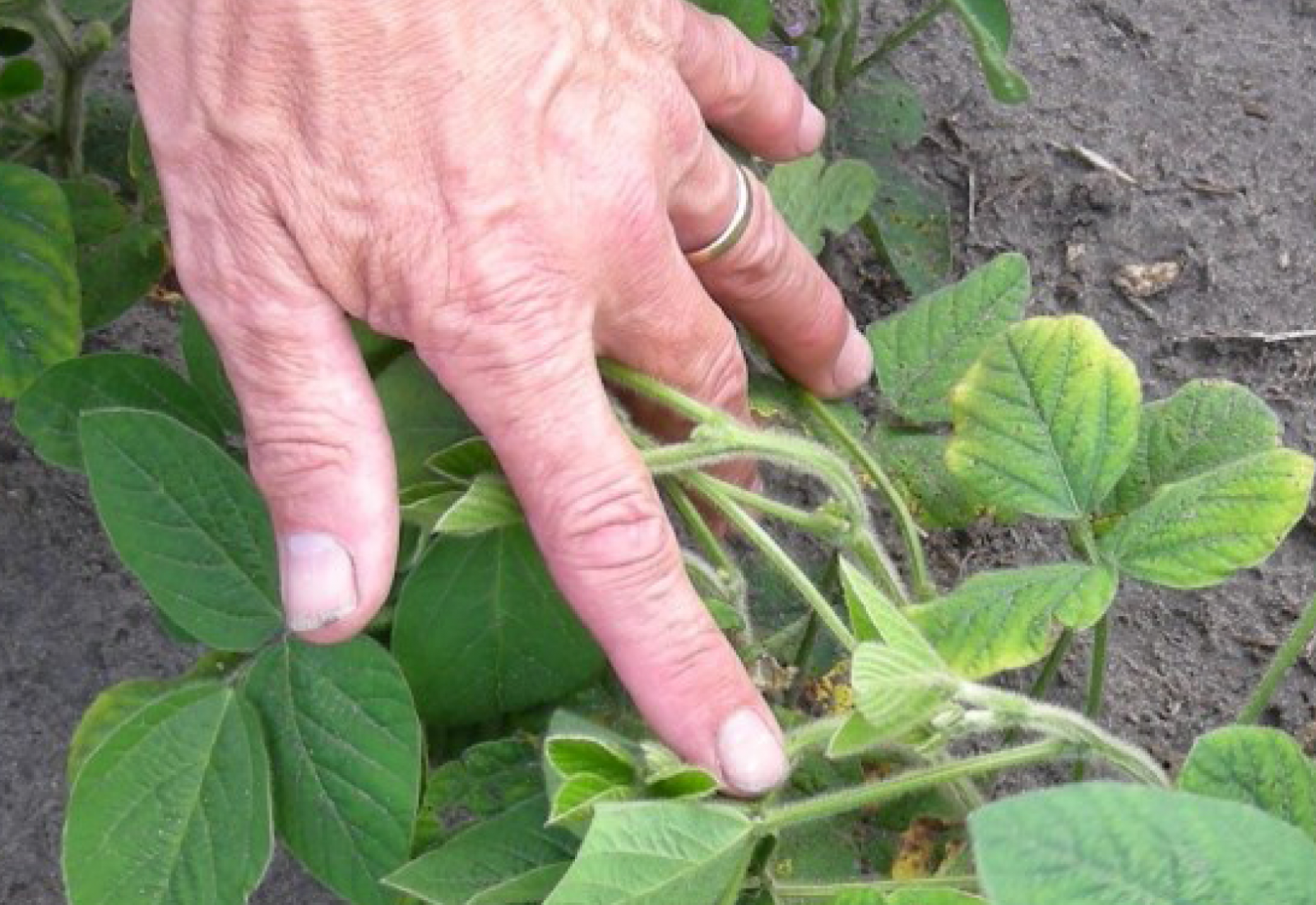Recipe for Soybean Success: Just Add Water (and Phosphorus, Potassium, and Sulphur)

By Geoff Geddes
At one time, “just adding water” might have been enough to ensure healthy crops. Today, such an approach can leave you disappointed come harvest time. Even soybeans, which are often seen as less demanding than some other crops, require added nutrients to flourish.
“Nutrients are essential for all forms of life,” says Don Flaten, a professor in the department of soil science at the University of Manitoba.
“Crop production removes a lot of nutrients from the soil which then have to be replaced. Nutrient management and replenishment are essential for long-term sustainability.”
Soybeans do have a lower requirement for some macronutrients than other crops. For example, they fix their own nitrogen from the atmosphere. In other areas, though, they need a helping hand.
The fuss about phosphorus
While his team’s research shows a relatively low probability of response from soybeans to phosphorus (P) fertilizers as they take P from sources that other crops don’t use, eventually the mineral must be replaced in the crop rotation.
“We recently completed a three-year study across 28 sites in Manitoba and only one site showed soybean response to phosphorus fertilizers. On average our sites yielded over 45 bushels per acre without adding P, but since soybeans take up about 0.8 lb of P per bushel, if you don’t add P, you’ll have less of it available for other crops in your rotation.”
In light of that, Flaten is encouraging Manitoba soybean farmers to maintain their P balance as best they can in their crop rotation so as not to shortchange other crops for phosphorus fertility.
Potent potassium
When it comes to soybeans and potassium, Flaten doesn’t mince words.
“Soybeans are pigs for potassium; they remove over a pound of potassium per bushel of harvest, which is at least double the rate for canola or wheat.”
That sentiment is seconded by Laryssa Stevenson, director of research and production with the Manitoba Pulse & Soybean Growers.
“Soybeans are the largest remover of potassium of all annual grain crops,” says Stevenson. “You run into the same issue here as with phosphorus. Since soils in Western Canada are generally high in potassium, farmers aren’t fertilizing for it.”
As a result, where soybeans are frequently part of the rotation, Stevenson is seeing soil that should have 300 to 400 parts per million of potassium depleted to below 100, which she calls the “critical threshold” for soybeans.
Sulphur at your service
The last of the “big three” macronutrients beneficial to soybeans is sulphur.
“Generally, if you are fertilizing other crops like canola that need sulphur, you should have enough in the soil to satisfy soybeans,” says Stevenson. “If the soil is limited in sulphur, you’re likely to see it in those other crops first.”
Don’t ignore iron
Some micronutrients are also notable for their role in soybean production. “Iron is one that we worry about in soybeans but not in other crops,” says Stevenson.
The specific concern in places like Manitoba involves iron deficiency chlorosis (IDC), which shows up early in the vegetative stage when soils get waterlogged in the spring or for some reason have saturated soil.
“Although there is a lot of iron in our soils, when that soil is saturated, it converts iron to a form that is unavailable for the roots to take up, resulting in a temporary iron deficiency.”
For soybean farmers who encounter this issue, Stevenson recommends waiting it out as it will likely clear itself up once the soil dries out. That doesn’t mean, however, that you’re in the clear for future crops.
“You need to be mindful in subsequent years that your crop is prone to IDC and choose a soybean variety that is resistant.”
Since some varieties are more effective at taking up iron from the soil, growers should consult the Manitoba Variety Evaluation Guide as it contains iron deficiency ratings specifically for soybeans.
The need for nitrogen
Still, the nutrient with the greatest impact on soybeans is nitrogen. And while it’s true that nitrogen fixation plays a major role in satisfying this need, Stevenson sees a role for farmers, as well.
“We advise putting down an inoculant in the seed-row or furrow, one that contains the rhizobium needed for fixation. Because soybeans only get about half the nitrogen they need from fixation, if your inoculant doesn’t work, or you forget to apply it, you can lose a lot of yield.”
For new growers who don’t yet have that built-up population of rhizobium bacteria in the soil, Stevenson recommends inoculating soybeans with two placements: a liquid inoculation on the seed followed by a liquid or granular inoculation in the seed row.
“Some of our research on fields with no history of soybeans shows an average yield increase of 10 bushels per acre with inoculation, so it’s an important step to get your crop off to a good start.”
Of course, it all starts with adequate moisture, but if you don’t include proper nutrients in the mix, it’s your business that may be taking a bath.



